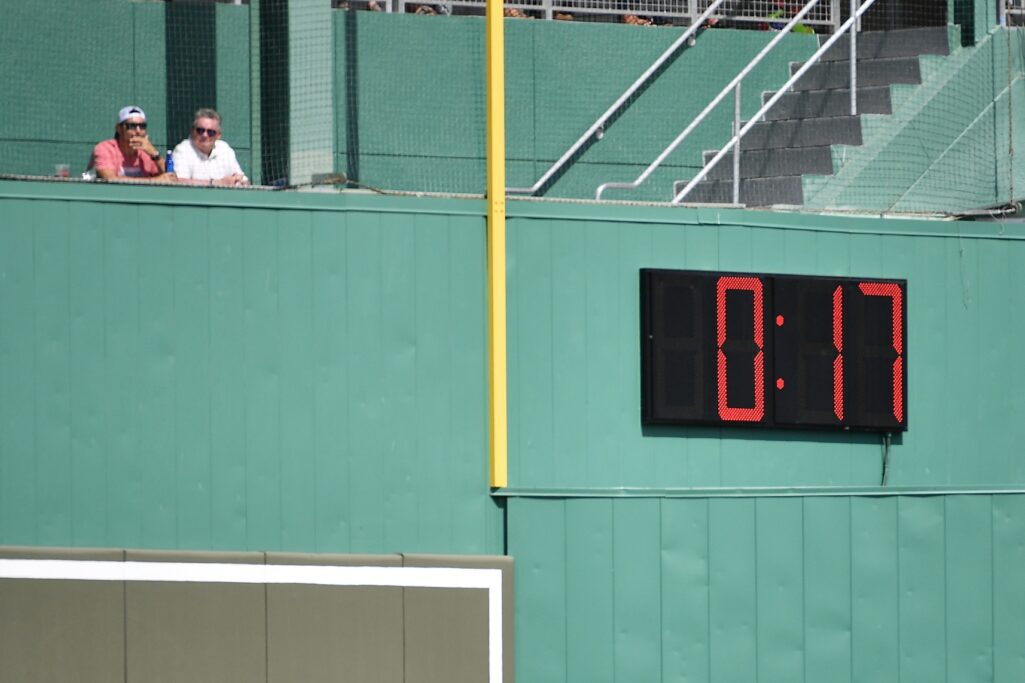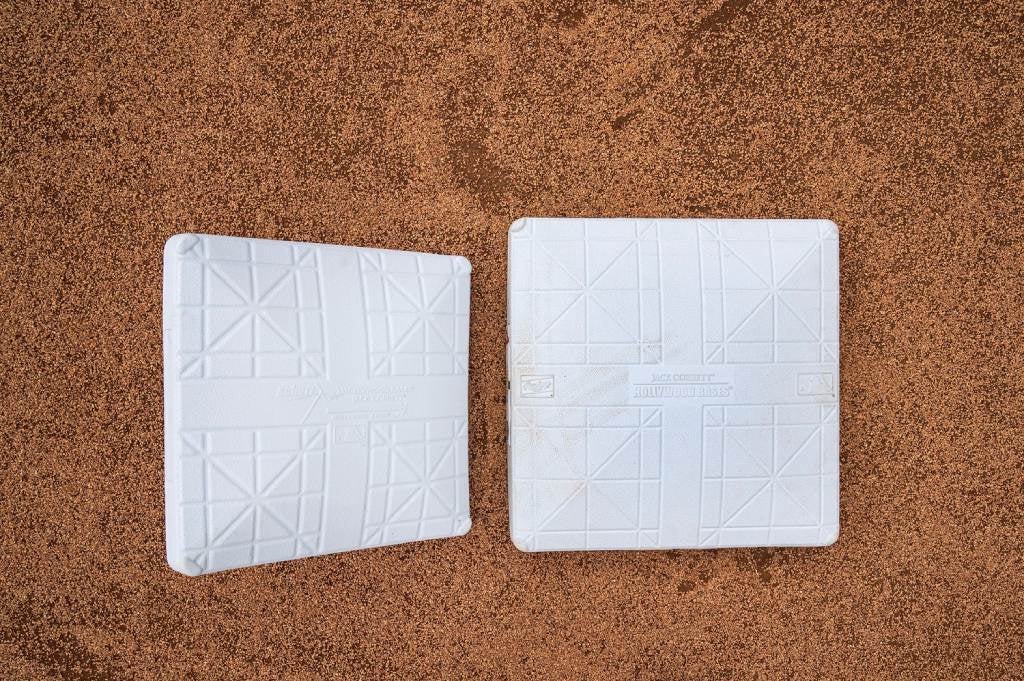Mar 9, 2019; Fort Myers, FL, USA; A general view of the pitch clock in use during the fifth inning of the spring training game between the Boston Red Sox and the New York Mets at JetBlue Park. Mandatory Credit: Jasen Vinlove-USA TODAY Sports
Happy Opening Day week everybody! On Thursday the 2023 MLB season will begin, with all 30 teams scheduled to be in action on Opening Day for the first time since 1968.
That new Opening Day format is just one of many changes coming to the league this year. Multiple rule changes that have been tested in the minor leagues, as well as a new scheduling format, have been put in place in Major League Baseball this season in a hope to help the pace of play, increase action, and draw more viewers.
With the season about ready to get underway, here are the new rules to be aware of…
Get The 98.5 The Sports Hub Newsletter Delivered To Your Inbox
Stay up to date with the latest Boston sports news and analysis, local events, exclusive contests, and more.
By clicking "Subscribe" I agree to the website's terms of Service and Privacy Policy. I understand I can unsubscribe at any time.








